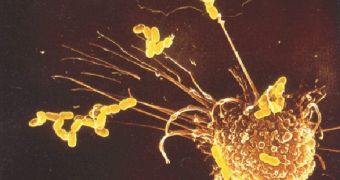Fusing cells together is crucial in analyzing the way their internal structure and DNA reprogram themselves after merger, and may hold the key to obtaining successful cellular hybrids between adult cells and stem cells. This can provide new stem cell treatments for conditions requiring such intervention. But technical difficulties encountered by the fuse process only placed its success rate at about 10 percent.
Now, researchers at the Massachusetts Institute of Technology managed to devise a way of combining the cells that increase the success rate from 10 to more than 50 percent. The new study, published online January 4th in Nature Methods, was led by associate professor of electrical engineering and computer science Joel Voldman and professor of biology Rudolf Jaenisch, who is also a Whitehead Institute member.
In other methods, streams of different cells, A and B, were made to flow on a tiny chip, which had small cups attached to it. These cups were only able to hold two cells, but the main flaw of these systems was the fact that there was no way to control how the cells paired up. In the end, many cups held cells of the same type, either AA or BB. The number of desired combinations (AB) was only 1 in 10.
With the new system, only A cells are made to flow in cups, this time smaller, and only able to hold one cell. After most cells are thus trapped, they are made to flow the other way around, in larger cups, situated opposite of the small ones. B cells are then made to flow in the large cups, thus increasing the chance of them meeting A cells. Once most cells are paired up, an electrical impulse fuses their membranes together.
Besides stem cell reprogramming, this technique could also be used to study interactions between any type of cells, be they animal or human. The applications for this research are limitless and drastically reduce the amount of time spent by researchers in labs worldwide.

 14 DAY TRIAL //
14 DAY TRIAL //